what to do when you find a lost passport
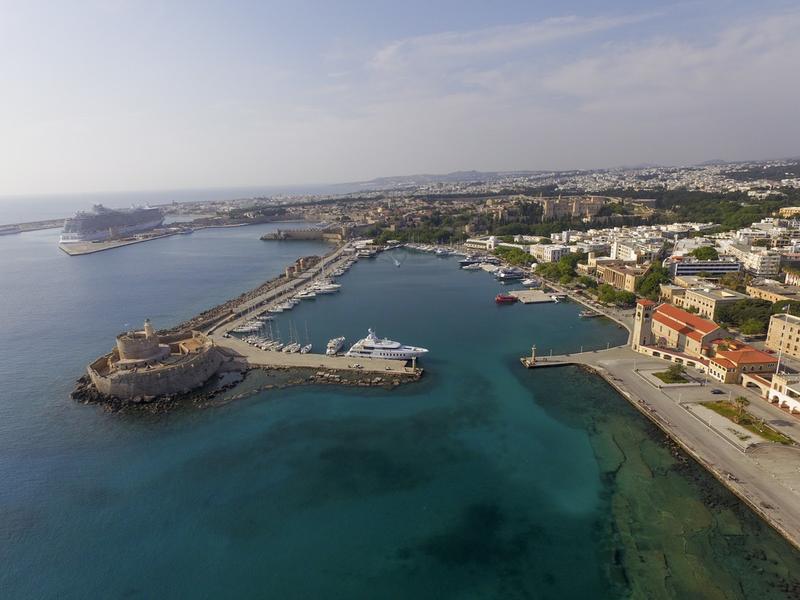
Every day, nosotros go out our wallets on coffee store counters, forget our phones in Lyfts, and dump out the contents of our bags before realizing, yes, the car keys were in our pockets the whole fourth dimension. Only some things that have been lost over the years aren't so mundane—or replaceable. From stolen artworks and disappeared writings to destroyed places, we're counting downwardly 30 of history's most devastating losses.
The Amber Room
Made from several tons of the titular gemstone, the Bister Room has been dubbed the "8th Wonder of the World." Six tons of amber, precious stones and aureate leafage fabricated this 180-square-foot room worth an estimated $142 million. Originally congenital in 1701, the Prussian-built Amber Room was eventually installed at Catherine Palace in Pushkin by Czarina Elizabeth.

But faux wallpaper wasn't enough to hibernate the room from the Nazi invasion of the Soviet Matrimony in 1941. Nazis packed it into 27 crates and shipped information technology to a castle museum in Königsberg, Germany. 2 years later, the Amber Room was packed abroad again, just before a series of bombings. And that's where the trail goes common cold.
No one has seen it since. For at present, the curious can visit an $xi million replica just exterior St. Petersburg.
Story of the Kelly Gang (1906), Showtime Feature-length Motion-picture show
Born in 1855, Ned Kelly became Australia's near famous bushranger. Known to many equally an Aussie Robin Hood, he became a bonafide fable just before his death and, in doing so, the perfect subject field for the earth'due south first feature-length motion-picture show.
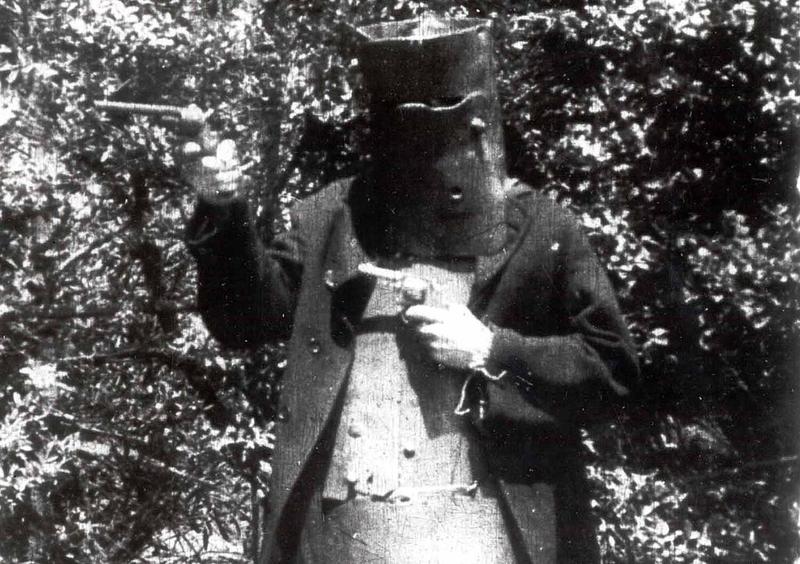
Infamously, Kelly and his gang concluded up in a standoff with the police in 1880. Kelly fashioned himself a adjust of armor and snuck upward on the police surrounding the town he'd taken hostage.
In 1906, director Charles Tait shot the silent moving-picture show The Story of the Kelly Gang in Melbourne. The end effect? A reel that measured 4,000 anxiety and a film that clocked in at a lilliputian over an hour. This made it the longest narrative—and first characteristic-length—flick in the globe. Over the years, bits of the lost motion-picture show have been cobbled together into a 17-minute fragment.
Library of Alexandria
Alexandria's library was the greatest archive of knowledge in the world—until information technology vanished. Historians guess the library housed over half a million documents from Assyria, Egypt, Greece, India, and Persia. Though many attribute the Library'southward devastation to a fire, the truth is shrouded in mystery.

Some pin the law-breaking on Julius Caesar, while others arraign violence that broke out between the Christians, Pagans, and Jewish people inhabiting the urban center. Some don't think there was a catastrophic fire at all—just slow dissolution over fourth dimension.
Stranger nevertheless, no architectural remains that can be definitively attributed to the Library have ever been constitute.
FIFA's Jules Rimet World Cup Trophy
You'd be difficult pressed to find an honour with a better Hollywood backstory than the original Jules Rimet World Loving cup Trophy. Outset handed out in 1930, the Jules Rimet Trophy was made of gold-plated sterling argent and lapis lazuli. And more than only footballers were eager to claim it.
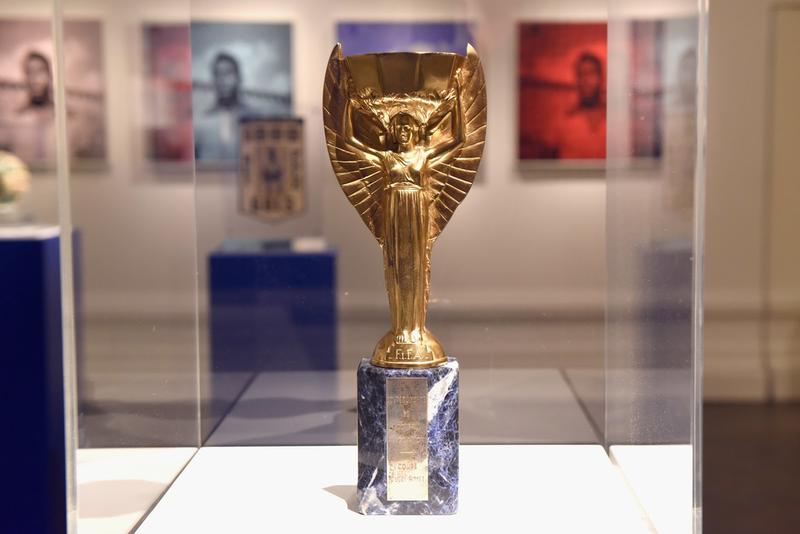
During World War Two, Ottorino Barassi, the president of the Italian Football game Federation, smuggled the trophy from a bank and into his flat. Nazi soldiers tracked the trophy to Barassi'southward home, but failed to open the maximum security shoebox stashed under his bed.
Years subsequently, the trophy was stolen while on display in England, only an intrepid dog named Pickles discovered it in some bushes within days of the theft.
After Brazil won the trophy for a tertiary time in 1970, it was displayed in Rio de Janeiro backside bullet-proof drinking glass. Despite these precautions, information technology was stolen on December 19, 1983. Most people believe it was melted down into gilded bars.
Honjō Masamune
The most respected Japanese swordsmith was Goro Nyudo Masamune. He saw the ascension of the samurai class's power during what's known every bit the Kamakura Period (the late 13th and early 14th centuries). Even today, his blades are highly sought later for their quality and rich history. But perhaps none is more renowned than the lost Honjō Masamune.
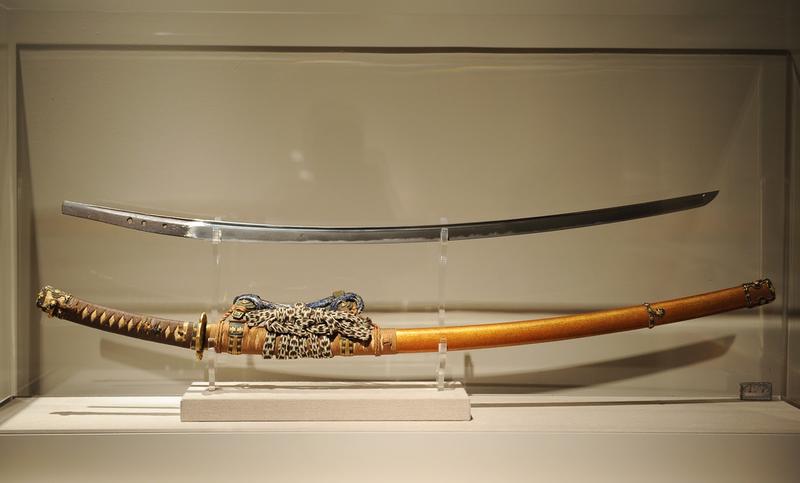
The Honjō Masamune received its proper noun from ane of its showtime owners, Honjō Shigenaga, a general who fought some other ranking officer during a battle in 1561. Shigenaga'south helmet was scissure in two past his opponent, but the general withstood the blow and killed his foe.
Equally was customary, he took his fallen opponent's weapon—a Masamune blade. The Honjō Masamune was sold and passed downwardly for years, until the Tokugawa family unit claimed it equally a symbol for their shogunate.
Merely, in the wake of World State of war 2, Tokugawa Iemasa handed over his family's prized swords in 1945 to the U.s. Army, including the Honjō Masamune. Since and so, the blade's whereabouts have been unknown.
Roanoke
Aside from its starring role in American Horror Story'due south 6th flavor, Roanoke is best known equally the first attempt to prepare a permanent English colony in North America. Also called the "Lost Colony," the settlement was established on Roanoke Island in 1585. But the land, which is in present-twenty-four hours Due north Carolina, shows no traces of this former colony.
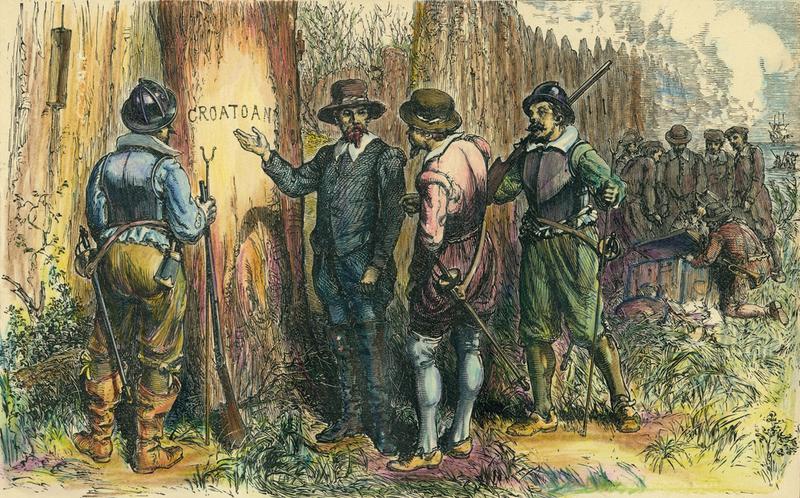
After establishing the settlement, most of those involved with the initial settlement returned to England for more than supplies, but a minor detachment stayed behind. When the settlers returned with supplies, they institute that the contingent they had left backside was gone.
Leader John White left the 115 new settlers in Roanoke and headed back to England for aid. Upon his return in 1590, the unabridged Roanoke Colony had vanished—no artifacts, no bodies. The simply clue? The proper noun of a nearby tribe, "CROATOAN," was carved into a tree.
Colossus of Rhodes
The Colossus of Rhodes was erected in the city of—surprise—Rhodes to celebrate the city's victory over Cyprus. Historians believe that the statue was 108 feet alpine, making it the tallest (known) statue in the aboriginal world. And, in today's terms, roughly the same meridian as the Statue of Liberty.
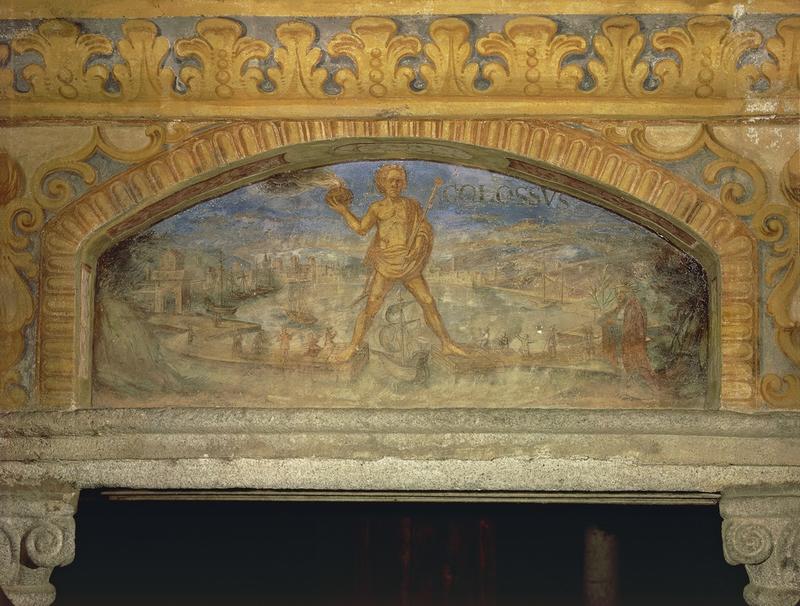
Ane of the Seven Wonders of the Ancient World, the Colossus was meant to be the Greek sun god Helios. It was constructed effectually 280 BCE, simply toppled around 226 BCE when a massive earthquake struck Rhodes. Unlike the remnants of other lost treasures from antiquity, parts of the statue were preserved.
As of 2015, there are plans to build a new Colossus at the archway to Rhodes Harbor.
Mahogany Ship
Though fishermen and traders from Indonesia, India and China visited the aboriginals of what is now known as Australia for thousands of years, Europeans didn't prepare human foot on the continent until a 17th century Dutch trek. Or then it was thought. The discovery of a shipwreck in 1836, just off the south-western coast of Victoria, well-nigh Warrnambool, challenged this normally-held conventionalities.
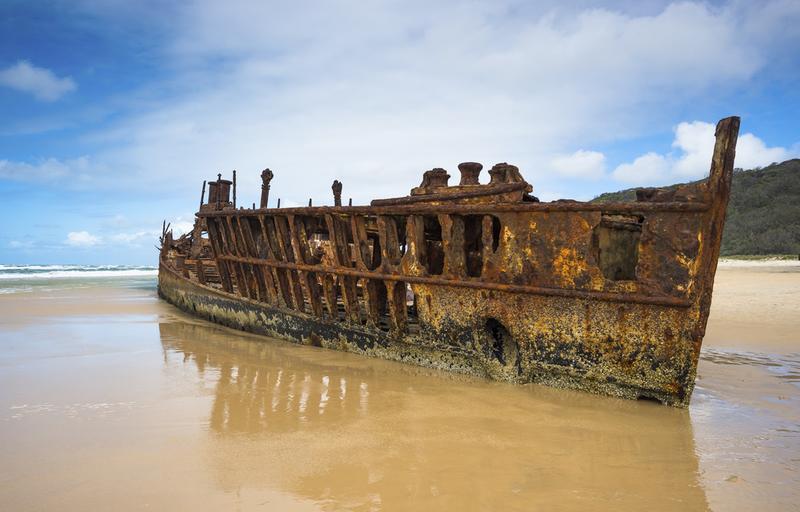
The whalers who discovered the wreck, half buried in sand dunes, claimed it was made of dark wood. Hence the nickname the "Mahogany Ship." Only, well-nigh significantly, the ship seemed to exist of Portugese origin.
Considering the shipwreck's location was uncertain, there oasis't been many big-calibration expeditions for the Mahogany Ship. Still, the Land Government of Victoria offered wreck-hunters a $250,000 reward in 1992 for the ship's recovery. Why? Well, if the ship is Portugese it could rewrite Commonwealth of australia'southward colonial history as nosotros know it.
Parliamentary Mace (Victoria)
Despite its intimidating proper noun, parliamentary mace isn't a weapon. (Anymore.) Instead, it'south a symbol of the Role of the Speaker and the ramble rights of the people. That's why the theft of the parliamentary mace from Victoria's Parliament marks one of Australia'southward greatest unsolved mysteries.

Made of argent, plated with gilded, and busy with roses, shamrocks, and eucalyptus leaves, the mace was taken simply later on midnight on Friday, October ix, 1891. The suspects? Many think the members of the house responsible for locking the mace upwards that dark nabbed information technology. And so brought information technology to a nearby brothel for kicks.
To this twenty-four hour period, anyone who finds and returns the mace will earn a lofty $50,000 reward. That'south a lot of vegemite.
The Complete Canterbury Tales
Geoffrey Chaucer's The Canterbury Tales—the bane of many a high school English course—contains 24 stories. Better withal, the 17,000 lines of text are all written in Middle English language. (Me thynketh, no thanks.) Believe it or not, Chaucer only wrote about a quarter of the tales he wanted to include before his death.

That's right: The Canterbury Tales were substantially the Game of Thrones (or, more accurately, A Vocal of Burn down and Ice series) of the belatedly 1300s. The book alternates between the points of view of various pilgrims, contains a lot of walking from identify to place, and its author couldn't seem to write quickly enough to close out the series.
Afterwards a decade of writing, Chaucer penned 24 of his 100 planned stories. And, when he died, some of those tales were still fragmentary. Now, several versions of particular stories exist. And we'll never know the issue of the pilgrims' expedition.
Several of Disney'southward Oswald Shorts
Earlier Walt Disney's Mickey Mouse debuted in Steamboat Willie (1928), the man backside the mouse worked on another animated series starring Oswald the Lucky Rabbit. In total, 27 one-reel "Oswalds" were produced at the Walt Disney Studio before Disney lost the rights to the character to Universal Pictures. And while things improved for Disney afterwards the dispute, Oswald's situation worsened.

For years, information technology was thought that only 19 of the Disney-produced Oswald shorts survived. In 2015, the British Picture show Institute discovered a missing Oswald short in its archives. A second "lost" Oswald cartoon surfaced in Japan in 2018. Yasushi Watanabe, at present 84, had purchased the five-infinitesimal pic Neck 'n' Neck (1928) decades ago for a mere 500 yen.
While these discoveries are exciting, motion-picture show buffs nevertheless mourn the fact that the other missing "Oswalds" may remain lost.
Leonardo Da Vinci'south Manuscripts
Leonardo Da Vinci is the Renaissance Man—artist, inventor, author, and full general overachiever. While his Mona Lisa draws hordes of visitors to the Louvre in Paris every solar day, he's as well known for several "ahead-of-his-time" inventions, including a paradigm for a helicopter-like flying automobile. And although a great deal is known virtually Da Vinci, a neat deal of his immense body of piece of work has too been lost.

After his death, Da Vinci'southward manuscripts were inherited past his student, Francesco Melzi. But when Melzi passed, the manuscripts were scattered—some were stolen, while others were given away or lost by Melzi'south son Orazio. At present, the existing manuscripts comprise only one fifth or then of Da Vinci's total trunk of work.
While fragments take resurfaced, the works are ofttimes difficult to decipher: Da Vinci famously wrote in code and practiced "mirror writing."
Lost Dutchman'south Gold Mine
Treasure-hunters and thrillseekers still prepare out to discover a treasure almost Apache Junction, Arizona that was allegedly buried somewhere back in 1891. Some of these treasure-hunters don't go far back at all. What's worth risking life and limb in the Superstition Mountains? The "Dutchman's" gilded.

German immigrant Jacob Waltz, "the Dutchman" in question, took the secret of where he hid his gold with him when he died. And why has no ane come close to digging up the mine? The Superstitions are treacherously steep and the magnetic rock messes with compasses. Worse still, summers are fatally hot; winters are fatally common cold. And cell phones often fail.
So, why effort? George Johnston, who worked at a local museum on the subject, said, "If a mine produces 2 and a half ounces of gold per ton of rock, it is a bonanza. Well, the Dutchman's gold ore that fabricated that matchbook example assayed out to 50 ounces per ton."
For some, this potential prize outweighs the risk.
Isabella Stewart Gardner's Art
If you head to the Boston-based museum's website, you lot'll see that the investigation into the 1990 theft at the Isabella Stewart Gardner Museum is agile and ongoing. In fact, if you have any tips that lead to the condom return of all thirteen stolen works they'll reward you with a cool $10 one thousand thousand.
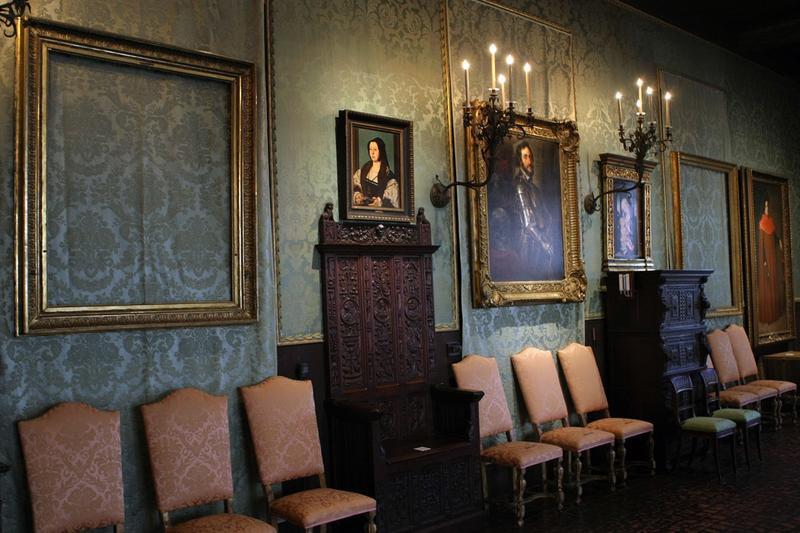
Well-nigh 30 years ago, two thieves disguised as police officers broke into the museum and grabbed the xiii paintings from the walls. That'due south right: $500 million—gone but similar that. Among the stolen works were pieces by Rembrandt, Vermeer, and Edgar Degas.
The heist is notwithstanding known as the largest private belongings theft in American history. And, in a nod to its history, the Gardner Museum displays empty frames where the stolen works in one case hung.
Sappho'southward Poems
The poet Sappho was dubbed "the tenth Muse" by Plato and known in the ancient globe for her accomplished poetry. During the third century BCE, her poems were collected into a whopping 9 volumes, which were subsequently lost or damaged.

After a parody characterized Sappho equally a promiscuous lesbian, Pope Gregory burned much of her piece of work in 1073. For awhile, it was thought that simply one twenty-eight-line verse form had survived. Only in 1898 that changed.
The outset of her verse fragments, written on papyrus, were discovered. Several years later, in 1914, archeologists working in Arab republic of egypt found coffins made from paper scraps—and on them? More than fragmented verses that appeared to exist authored past Sappho.
Tree of Ténéré
Northeastern Niger was once home to a forest of copse. Afterwards desertification took hold, a alone acacia, known as the Tree of Ténéré, remained. Known as the most isolated tree in the world, the closest trees lie nearly 250 miles away.

Dubbed a "living lighthouse" by Michel Lesourd in the 1930s, the Tree of Ténéré was considered sacred for decades by the nomadic Tuareg people. When Europeans drew military maps of the area, the acacia became a landmark. Only in 1973 this inverse when a reportedly drunk commuter struck the tree, uprooting it.
To award the tree, a metal sculpture has been constructed where it one time stood. And Niger's National Museum relocated the remnants of the Tree of Ténéré to Niamey for a display.
Crown Jewels of Republic of ireland
If you're anything similar u.s.a., the phrase "crown jewels" immediately conjures up a picture show of a fancy royal, all decked out in furs and gemstones. But the Irish Crown Jewels are a tad different. They don't take links to the monarchy, simply to an aloof group called the Order of St. Patrick. And the social club's "Grand Master" would wear the jewels—well, until the infamous theft in 1907.
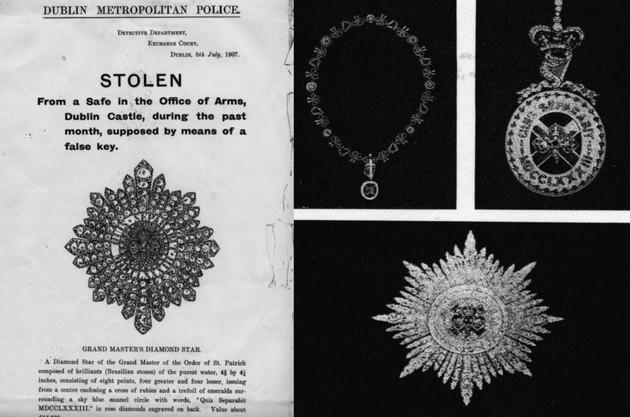
Sir Arthur Vicars, who was charged with protecting the Crown Jewels, held two keys to the safety. He kept ane of those keys at his dwelling.
Simply Vicars wasn't the most trustworthy. Once a night of drinking led to his friends stealing his keys and pulling a prank on him. He'd besides misplaced his keys a few times. All of this to say, his negligence led to the theft of jewels worth $20 million.
Amelia Earhart's Airplane
Amelia Earhart famously became the outset woman to complete a solo flying beyond the Atlantic Body of water—besides as the beginning person to fly solo to Hawaii from the mainland United States. Her next claiming? Unfortunately, circumnavigating the globe in her twin-engine Lockheed 10E Electra didn't go as well.

In July of 1937, Earhart but… vanished. Somewhere over the Pacific Sea, near a refueling stop on Howland Island. Just seven,000 miles from Oakland, California—where she'd initially taken off. Stranger even so, her plane wreckage has never been recovered.
Many theories—and conspiracies—have cropped up around this lost-at-sea pilot. Some believe Earhart survived for a time on Nikumaroro (formerly Gardner Island), where a piece of Plexiglas potentially from the Electra'southward window was constitute.
Holy Chalice
From Indiana Jones and the Last Crusade (1989) to The Da Vinci Code (2006), the Holy Chalice has been the field of study of innumerable pop culture quests. The beaker is so coveted because it's the cup Jesus drank from, or served wine from, at the Terminal Supper. Others believe it was also the vessel used to collect Jesus'due south blood at his Crucifixion.

Despite its ties to Christianity, the chalice became then sought-afterwards due to its clan with a magical detail from Arthurian literature—the Holy Grail.
The interwoven stories of the Holy Chalice and Grail inspired several claims that medieval relics, such as the Valencia Chalice and the Genoa Chalice, are The vessels in question. Even so, the location—and being—of the Holy Chalice is still upwardly for debate amongst scholars.
Peking Man
The "Peking man" is a proper name given to an extinct hominin of a species you may know—Homo erectus. Back in 1927, an anthropologist identified the Peking human being as role of homo lineage, thank you to findings from a single tooth found near Beijing. According to the mandibles, limb bones, and teeth uncovered by researchers, these characters walked the world near 770,000 to 230,000 years agone. And so the fossils walked out, too.
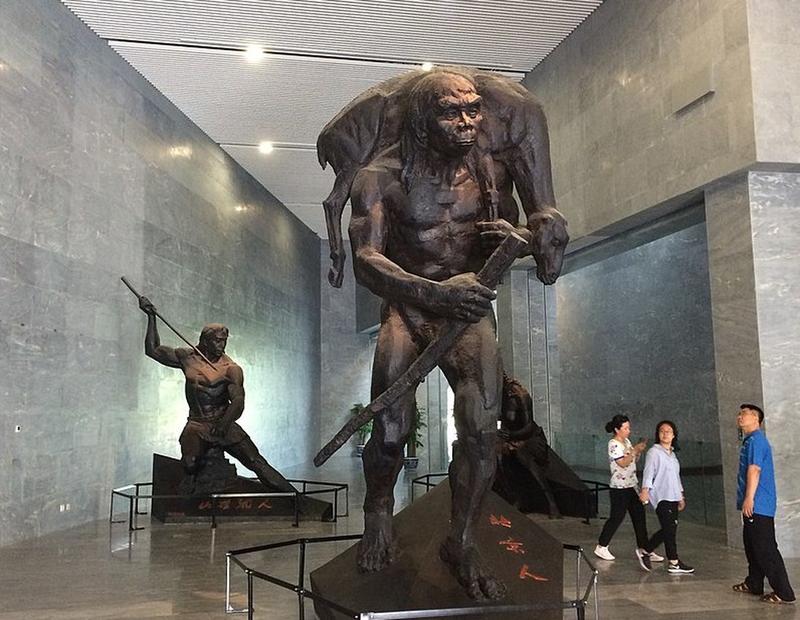
Well, sort of. About 70 years ago, the Peking homo fossils vanished. The fossils were kept at Peking Marriage Medical College, but in 1941 researchers feared that the Japanese invasion would put the fossils in danger.
They did what any responsible scientist would practise: they tried to smuggle the fossils out of China and to the presumably safer U.s.a.. But the boxes of bones never made their connecting flying. Ane small step for human being—and ane behemothic setback for human being evolution enquiry.
Florentine Diamond
Weighing in at 137 carats, this next contender gives the (fictional) Heart of the Ocean a run for its money. This 9-sided 126-facet double rose cut diamond is stake yellowish in color and hails from India. But despite researchers' noesis of its origins, its path through history is but as nebulous as its current whereabouts.

The first reported sighting of the Florentine Diamond dates back to the tardily 1400s when the Duke of Burgundy barbarous in battle while wearing it. After that, the diamond made its manner to Italian republic: its alleged owners included Pope Julius Two and the Medici family unit.
In 1736, Maria Theresa of Austria acquired it when she married the Duke of Tuscany, making the Florentine Diamond part of the Austrian crown jewels.
During World War I, the ownership records get messy: some say the Germans stole it. Others say the regal family fled with it, but to take information technology stolen and sent to South America where it was presumably sold and recut.
Buddhas of Bamyan
Hewn from sandstone cliffs, the Buddhas of Bayman were ii statues—ane 115 feet and the other 174 feet tall—of Gautam Buddha. Located in the Hazarajat region of Afghanistan, these monuments dated dorsum to the sixth century. These impressive Silk Road statues survived the campaign of Genghis Khan to become a UNESCO World Heritage Site. But, in 2001, the statues met a harrowing fate.

On orders from Mullah Mohammed Omar, members of the Taliban destroyed the statues in a dynamite blast. Since they were Buddha statues, the Taliban considered them "idols" and shot at them with anti-aircraft artillery. The resilient statues withstood explosives and rocket launchers, earlier eventually falling victim to the Taliban's iconoclasm.
Pyramid at Nohmul, Belize
Located on the Yucatán Peninsula, Nohmul (or Noh Mul) is a Maya archeological site in what is now modernistic-day Belize. The country is known for its lush rainforests and cute coral reefs, but what really put it on the map was that it is home to ane of the 15 aboriginal Maya sites in the world. Unfortunately, the site changed dramatically in 2013.

The master pyramid (like to the ane pictured above) once towered over the site, coming in at roughly 60 feet tall. But a construction company responsible for building nearby roads bulldozed the pyramid and other mounds in order to utilize the gravel. Now, the main pyramid is gone.
SInce Maya sites are protected by law, officials in Belize plan to those responsible for the destruction to court. Nonetheless, the losses are irreparable.
Plato's Hermocrates
Like every business organization-savvy author, Plato was in it for a three-volume deal. Or, that is, his hypothetical dialogue Hermocrates was meant to circular out the trilogy he started with Timaeus and the unfinished Critias. So, what exactly are these dialogues?

They're sort of like monologues delivered by the titular characters. For instance, Timaeus is a potentially invented figure who speculates about the nature of the physical world. Critias is a flake more exciting: Information technology recounts how the kingdom of Atlantis tried to conquer Athens.
Historians tin can but speculate about Hermocrates. The speaker might have been the Syracusan politico and full general of the same name. It might've shed light on naval powers and strategy.
Though we prefer the estimation constitute in Indiana Jones and the Fate of Atlantis video game, wherein Hermocrates details the location and culture of Atlantis.
The Complete Bayeux Tapestry
This impressive tapestry dates back to the 11th century and measures in at 230 anxiety long and 165 anxiety tall. And it uses all that surface area to draw the Norman conquest of England. For vii centuries the tapestry remained safely in the Bayeux Cathedral. In 1792, it was almost cutting into pieces and used equally coverings for soldier's carts. Luckily, it escaped that dire fate—for a time.
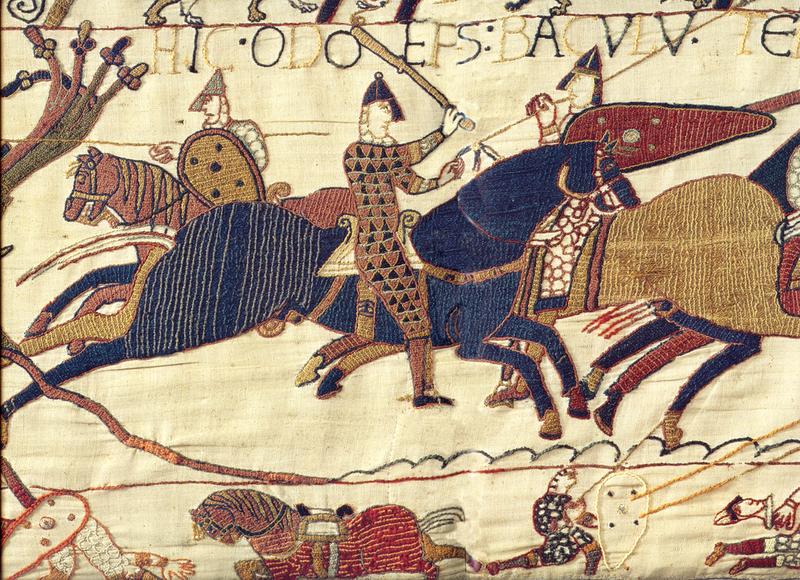
Since it's removal from the cathedral, the final panel(s) appears to be missing. Though it transferred hands several times during World War II—from underground shelters to German research facilities and, finally, to the Louvre in Paris—it remained relatively unscathed. Yet, the question of how the tapestry'due south narrative ended has puzzled historians.
A team of embroiders worked tirelessly to fill up in the gaps. In 2014, they completed panels that depicted what happened after William the Conqueror won the Battle of Hastings. And though the replica panels friction match the way of the tapestry, we'll never know what the originals illustrated.
Gospel of Eve
Though there are thought to be around 20 "Lost Gospels," the Gospel of Eve is past far the most intriguing—and controversial. Though fragments of some Lost Gospels exist, others were either completely lost to the ages or purposely destroyed past the Catholic Church building. So, why weren't these gospels added to the Bible?
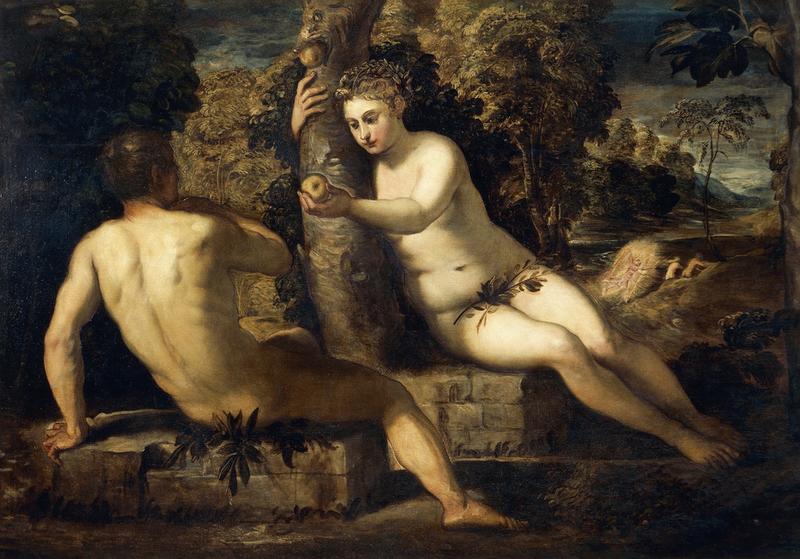
According to the church, they were excluded for either A) being of unknown origin, or B) being authored past heretics. Want to know all about Eve? Well, that's a flake tricky. It's unclear if a re-create of Eve's gospel exists these days.
The quotes we do have from the Gospel of Eve point that the text advocated for tenants of "gratuitous love"—from polyamory to birth control—and mentioned (gasp) the menstrual cycle.
Bayt al-Hikmah (House of Wisdom)
The Bayt al-Hikmah, or House of Wisdom, could certainly challenge the Library of Alexandria for the title of "Greatest Repository of Knowledge" (Working Title). Established in Baghdad during the eighth century, this impressive library was as well a cultural center for astronomers, philosophers, mathematicians, translators and inventors.
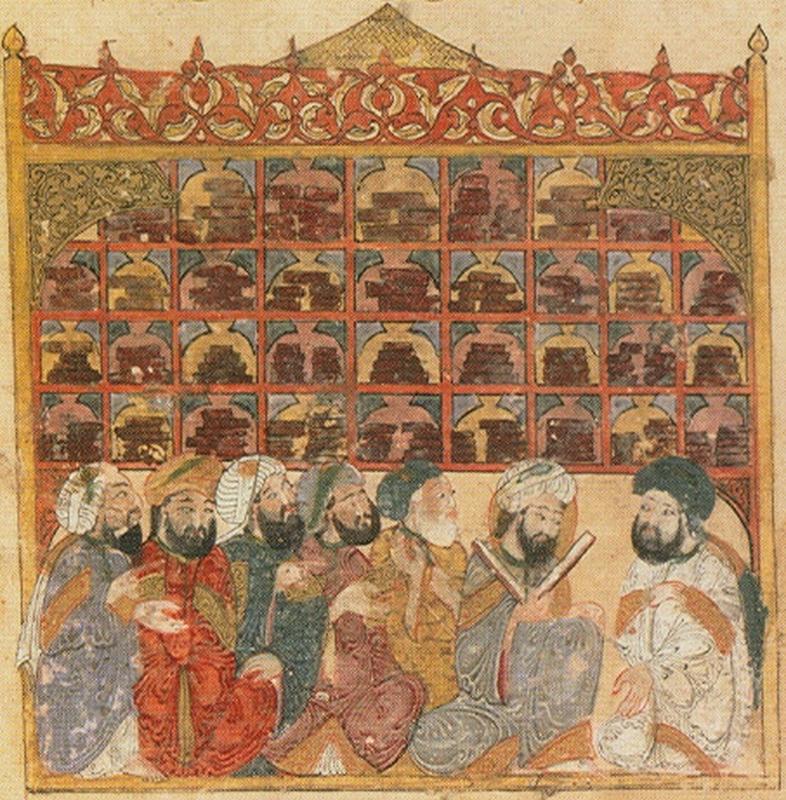
Byzantine researchers were sent to study at this renowned institution. Several languages, including Arabic, Farsi, Aramaic, Hebrew, Syriac, Greek, and Latin, were spoken at the facility. The House of Wisdom truly embodied the merging of intellect, traditions, and cultures from many nations.
Simply Bayt al-Hikmah met a tragic end when the Mongols invaded during the 13th century, killing the scholars and dumping the books in the Tigris River. It is said that the river flowed blood-red and black for days from all the blood and ink.
Yongle Encyclopedia
The Yongle Encyclopedia, or Yongle Dadian, was China's—and the world's—largest encyclopedia when it was finished in 1408. Bundled by subject into 22,877 juan (sections), the text was jump into a whopping eleven,095 volumes. But this beautifully illustrated collection went the manner of the residuum of the objects on our list.

During the 1500s, information technology was moved to the Forbidden Metropolis for protection. The emperor ordered it copied and, non long after, the original was lost, or scattered. Some historians believe the Yongle Encyclopedia was destroyed in a fire that swept through the Forbidden City during a rebellion. Others posit it was buried with an emperor. A third theory suggest it burned in the Qianqing Palace burn.
At present, simply 400 volumes remain. And its "World's Largest Encyclopedia" championship has been claimed by Wikipedia.
Ur-Village
This above all: to thine ain self be true—unless you can find a wealth of inspiration in someone else. In that case, soak in their work and way your own in its footsteps. Y'all heard that right. William Shakespeare'south Hamlet is not as original as your English teacher may have claimed. First of all, Village is based on a Norse fable. But, more than importantly, information technology'southward based on another play.
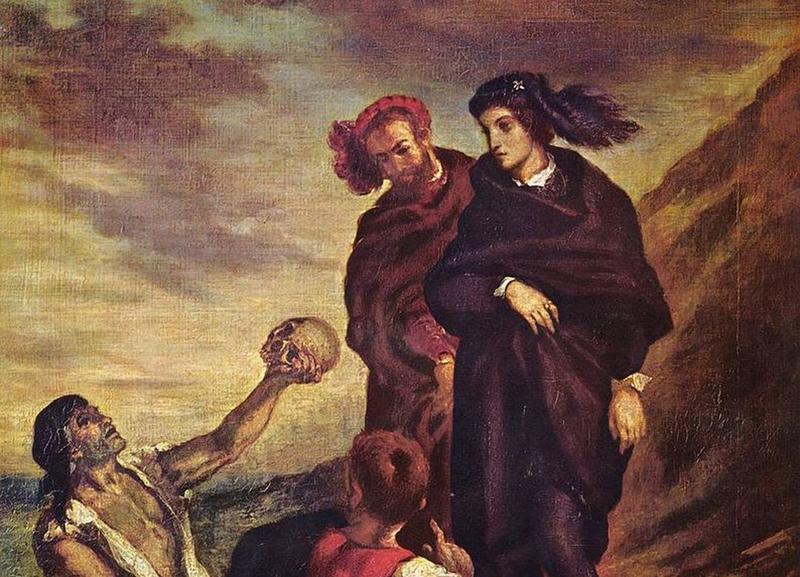
Most researchers agree that Shakespeare based his famous tragedy on a play past Thomas Kyd, known equally Ur-Hamlet. Of course, as fate would have it, no re-create of Ur-Village exists. All nosotros really know is that information technology was performed in London, meaning Shakespeare was (more likely) in the know about it.
This OG-Hamlet was also a tragedy that contained a line shouted by a ghost. That line? "Hamlet, revenge!" Very "brevity is the soul of summary," if you ask u.s.a..
Jack the Ripper'due south "From Hell" Letter
Jack the Ripper is London's most infamous—and unidentified—serial killer. He had a agonizing penchant for murdering sex workers with anatomical percision, leading to his nickname. The "Jack the Ripper" title actually originated in a letter from someone claiming to be the series killer, though it was later on deemed a hoax. The "From Hell" letter, yet, is thought to be authentic.
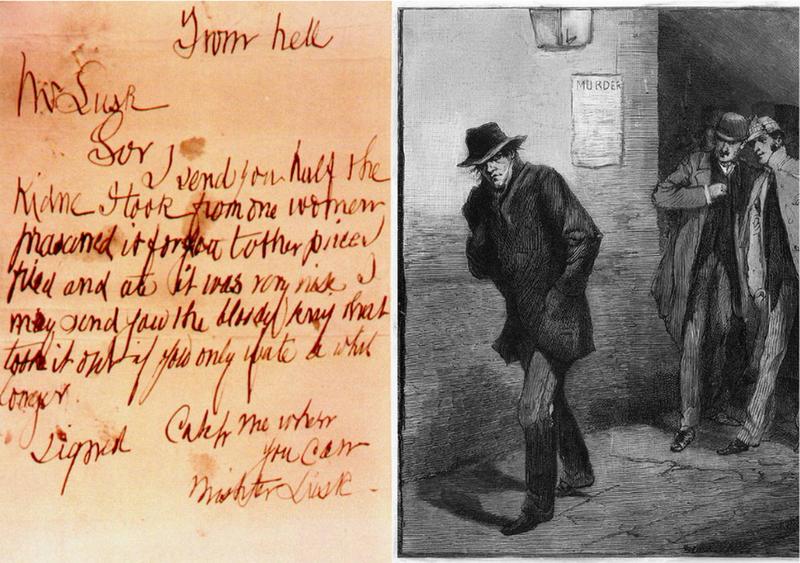
Why? When George Lusk, chairman of the Whitechapel Vigilance Committee, received the letter on October 15, 1888 it didn't come with chocolates or flowers. Instead, it arrived with half a man kidney. For this reason, of the thousands of letters allegedly sent from Jack the Ripper to the police, "From Hell" was believed to be the real deal.
Decades later, fingerprints on the letter might've helped experts crack the case. But some poor record-keeping procedures ruined that notion. The alphabetic character—and kidney—are lost, so don't expect the bandage of Criminal Minds to solve this one anytime soon.
villarealmucatinter.blogspot.com
Source: https://www.reference.com/history/lost-things-history?utm_content=params%3Ao%3D740005%26ad%3DdirN%26qo%3DserpIndex
0 Response to "what to do when you find a lost passport"
Post a Comment